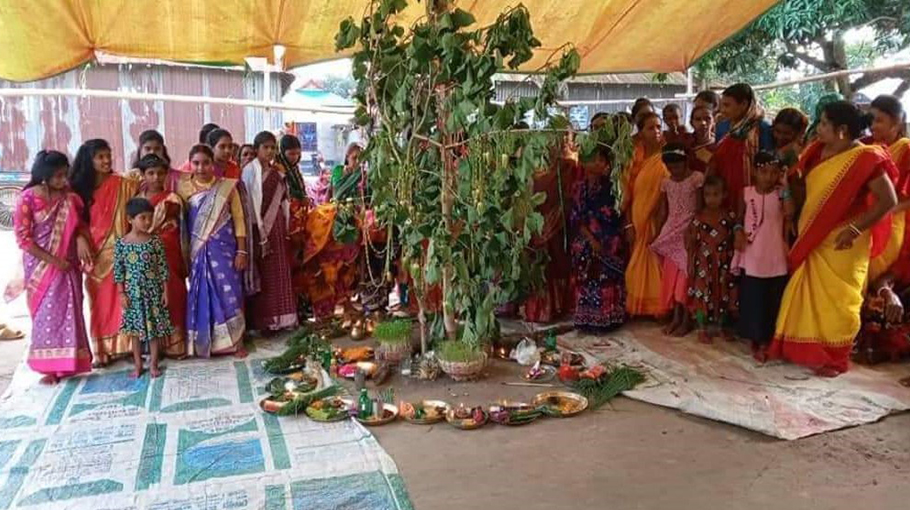Karam festival celebrated in Raiganj of Sirajganj

Karam festival is celebrated with religious fervor on Shukla Ekadashi of Bhadra month in Tarash and Raiganj of Sirajganj. On Tuesday (September 6) Santal, Unrao, Mahato, Baraik, Kurmi, Singh, Pahan, Mahali and other small ethnic groups celebrate this festival in their own way.
This festival is celebrated by cutting the branch of the tree called Karam following various ancient customs hence its name Karam festival. Punjo is done in dal poo so it is also known as dal poojo in some places.
'Giiralai vadaraa masao, lagalai karam ka anas', means 'The month of Bhadra has fallen, the hope of the Karam festival has risen in my mind.'
Bhadra month is called 'Karam month' in Kurmali language of Mahato people. Karam is held on Shukla Ekadashi tithi of Bhadra month. However, some communities organize on other dates as well.
Karam Utsav is a five-day event. Somewhere this ceremony is done for seven days. Those who participate in Karam Puja (Kermeti) have to avoid non-vegetarian food like turmeric, oil and all kinds of spices from the first day. Kermeti refers to those who participate in Karam Punja.
They believe that if one violates this diet, the germination of his part of the seed (Janwa) dies. Janwa refers to the germinating shoots of saplings made by mixing soil, sand, moong, kurti, chickpeas etc. materials. It broadly refers to the germination, nurturing and preservation of various agricultural seeds.
It is believed that the indigenous people started agriculture thousands of years ago. The Karam festival mainly celebrates nature in the symbolic sense of the germination of seeds, the loving nurturing and preservation of children from seeds. Janwa is raised through various rituals and songs.
Every day at night the Jwanwa is given water and awakened through the same ritual, song and Jhumur. That is, nature is worshipped. With regular care, the seeds at this time turn into yellowish green plants with two leaves. On the last day, in the evening, the Kermetis put karam dal in the courtyard and decorate it with flowers, cucumbers, ribbons etc., put the dals at the base of the dal, take the kasar plate decorated with jalant lamp and varandala and focus on the punjo with eagerness cherishing their religious beliefs and customs. The work of poonja was completed that night by listening to the old woman's niti story knowing the instructive story of karma dharma and bowing to the dal at the right time and sprinkling flowers.
Chairman of Indigenous Society and Culture and author and researcher Ujjal Mahato said that the Karam festival is a festival that is thousands of years old.
This festival has a deep connection with the origin of agriculture. In this festival, girls wish the well-being of father, brother and also the festival plays an important role in character formation of children.
Birendra Nath Ura, president of Tarash Upazila Tribal Multipurpose Development Organization, said that nature is worshiped in the symbolic meaning of the germination of seeds and the nurturing and preservation of children in this festival.




